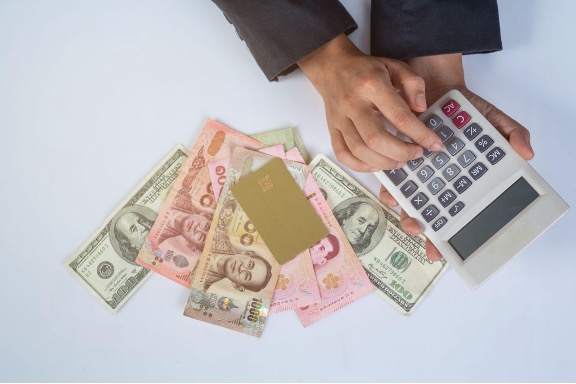As a digital economy power player in the Asia-Pacific region, Thailand stands at the center of the ongoing Asian payments revolution. Driven by vigorous e-commerce activity, the country is expected to grow into a US$50 billion digital economy by 2025.
This economic activity and resulting innovations make Thailand an attractive prospect for global businesses. However, excitement needs to be tempered with informed caution: new entrants should be prepared for frictions and risks that inherent in Thailand's rapidly growing payments ecosystem.
Understanding Thailand's payments landscape
Payments in Thailand sit at a crossroads: its tech-savvy population is counterbalanced against a section of the population that remains underbanked or unbanked.
Cash still leads the pack for payments, followed by credit and debit cards, digital wallets, bank transfers, and contactless payments. At point-of-sale (POS), cash still rules – but its dominance may be coming to an end, judging by the declining share of POS cash transactions between 2019 and 2023.

Cash is still widely used in Thailand though digital payments are fast catching up.
Coming up hot on cash's tail are digital payments. Thailand is already a regional leader in early adoption of digital payments — with usage rapidly boosted by government initiatives, technological advancements, and evolving consumer behaviour. (More on these below.)
The trend looks set to continue: the percentage of Thais conducting digital payments transactions rose to approximately 92% in 2021, compared to the average of 78.1% measured across Asia-Pacific Economic Cooperation (APEC) member countries. This dovetails with robust growth in Thai e-commerce, as payments in the sector are expected to surge by 13.7% in 2024.
Popular payment methods in Thailand
How are Thais paying for their purchases these days? Let's examine the most popular payment methods in Thailand.
Credit cards
Credit cards have been on an e-commerce rebound post-pandemic; in 2023, card-based spending increased 23.2% for online shopping in 2023, compared to just 7.3% for POS sales. Over the next four years, the value of card payments in Thailand is expected to grow at a compound annual growth rate (CAGR) of 9.2%, reaching US$94.5 billion by 2028.
Discounts, cashback offers, instalment payment options, and other benefits (with new variations on each advertised every advertising cycle) account for cards' continuing popularity.
Digital wallets
E-wallet payments rank as the second most used payment method for both e-commerce and POS transactions in 2022. The most popular Thai digital wallets include GrabPay, Line Pay, mPay, ShopeePay and TrueMoney.
E-wallet adoption has been aided by government efforts like a new government "digital wallet" scheme to distribute a total of US$14 billion to underprivileged Thais, a stimulus package expected to boost economic growth, and disbursed exclusively through Krungthai Bank's Pao Tang e-wallet.
Bank transfers/Account-to-Account (A2A) payments
A2A payments outrank Thailand's online payment methods by a wide margin, representing 44% of e-commerce transaction value.
A2A payments in Thailand are facilitated by Thailand's national real-time system, PromptPay, which allows consumers to pay for goods and services directly from their preferred banking app. PromptPay transactions can be validated by users' national ID number or phone number, lowering the barrier for entry by removing the need to provide identification at the point of sale.
Cash
Despite its ongoing decline in popularity, cash remains the payment method of choice, especially for POS transactions. As of 2022, the share of cash in Thailand's in-person transaction value was the highest in the APAC region at 56%, with digital wallets, credit cards and debit cards following at 23%, 11% and 7% respectively.
Cash payments remain prevalent largely due to a substantial portion of Thailand's population being underbanked (45%) and unbanked (18%); their lack of access to conventional banking limits their access to alternative payment methods.
What drives digital payments growth in Thailand?
Drivers for digital payments in Thailand can be seen on both the demand and supply side. On one hand, consumers are driving change through evolving shopping behavior. On the other, business and government interests motivate their respective advocacies for new cashless payments methods.
"Mobile-first" Thais
Thailand shares the region's high rates of mobile penetration and internet access – and has followed its Southeast Asian neighbours in a widespread embrace of digital payments. According to Thailand's National Statistical Office, 59 million Thais out of a total population of 71.8 million use the internet regularly, while almost 63 million use mobile phones.
These "mobile-first" masses have made adoption of digital wallets and mobile payment apps relatively seamless in Thailand. Digital wallets already rank as the top digital payment method used in Thailand (67%).
The integration of some digital wallets with other popular platforms (such as LINE Pay is embedded in the LINE messaging app, while ShopeePay is integrated with Shopee e-commerce platform) has streamlined the adoption process for users, who can now make seamless payments within apps and platforms they frequently use.
PromptPay's wide adoption
The introduction of PromptPay in 2017 was a game-changer for unbanked Thais. Long denied access to traditional banking services, they now benefit from a lower barrier to accessing financial services through PromptPay, as the national real-time payment system removes the need to enter bank account details.
When it launched, PromptPay was already interoperable with MasterCard, Visa and UnionPay. Later, it further expanded its reach through cross-border payments linkages with countries in APAC.
Within four months of PromptPay's launch, it facilitated 7.5 million transactions, totaling US$ 1.43 billion in transaction value. As of 2023, PromptPay experienced about 54.5 million average daily money transfers, amounting to a total yearly value of 130 billion baht.
Active government support
The Thai government plays an unusually active role in supporting the consumer shift from cash to digital payments.

The government plays an active role in encouraging the use of digital payments in Thais' daily lives to support financial inclusion.
As part of its mission to promote financial inclusion for Thai citizens, the Bank of Thailand has developed a series of plans to encourage long-term growth of digital payments, including the National E-Payment Master Plan and the Payment Systems Roadmap.
This reflects a top-down approach that complements the financial sector's development of payment platforms, and the popular demand for these platforms driving their mainstream use.
Key takeaways for international e-commerce businesses
- Put mobile payment options front and centre. Integrate popular digital wallets into your payment system; or promote the use of PromptPay QR code payments, in line with the growing trend of QR code usage in Thailand.
- Work with partners that can help you navigate the Thai payments landscape. Third-party assistance from knowledgeable partners can help eliminate compliance issues while streamlining the integration process.
- When asked to choose a new account provider, one in three Thais prioritise ease of use or good fraud protection as deciding factors. This reflects growing local concern about the risk of financial fraud, a major factor in rising cart abandonment rates. Make sure your processes comply with relevant data security regulations and industry best practices, to better protect customer information and maintain confidence in digital transactions.
Stay ahead on payments in Thailand
Thailand offers a dynamic yet challenging market for businesses aiming to establish a foothold. Success requires a sharp focus on rapidly evolving consumer preferences, particularly in mobile payment options, and a strong grasp of regulatory requirements that build local trust in digital payment systems.
Antom simplifies this process by delivering secure, efficient payment solutions tailored to support market entry. With access to both global and local payment methods, our solutions help businesses streamline operations, boost conversions, and ease their integration into the Thai market.
Contact us to discover how Antom can power your journey into Thailand with confidence.





